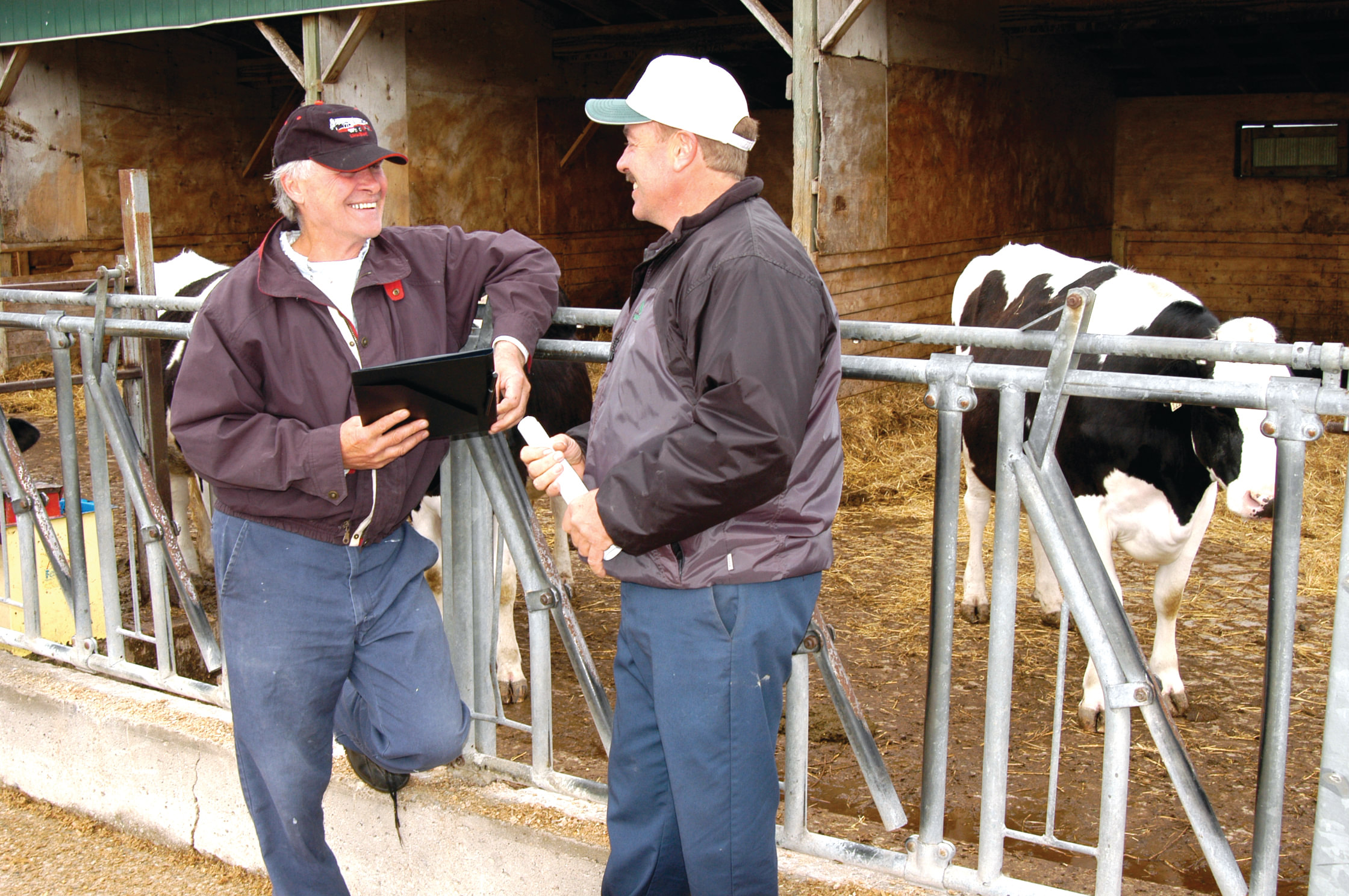When farms require a nutrient management strategy (NMS), a nutrient management plan (NMP) or a non-agricultural source material (NASM) plan
Learn when a farmer is required to have an NMS, an NMP or a NASM plan and what is included in the plan. This technical information is for Ontario producers.
ISSN 1198-712X, Published April 2021
Introduction
Under the regulations of the Nutrient Management Act, 2002 (NMA), a farmer may be required to have one or more of three documents:
- a nutrient management strategy (NMS)
- a nutrient management plan (NMP)
- a non-agricultural source material (NASM) plan
This fact sheet will discuss various triggers set out in the Regulation. Once the farmer meets one of these triggers, the farm operation is “phased-in” under the Regulation, and most of the requirements of the NMA apply to that farm. At this point, the farmer is required to have one or more of these documents.
The NMA has two basic principles: environmental protection and a sustainable future for agriculture operations and rural development. NMSs, NMPs and NASM plans recognize the balance between these principles and attempt to help producers successfully manage the nutrients under their control.
This fact sheet explains what is included in each of these documents and when a farmer is required to have an NMS, an NMP or a NASM plan.
When a farm is required to have an NMS, an NMP or a NASM plan
Nutrient management strategy (NMS)
An NMS includes:
- the calculation of the manure to be generated from the livestock
- proof of adequate storage capacity for the manure
- an acceptable management plan for runoff and farm wash water
- a farmstead sketch showing that new and expanding facilities are acceptable distances away from wells and watercourses
For most farms, the typical activity that would require an NMS is when a building permit application is sought for constructing or expanding a livestock barn or manure storage facility (assuming there will be greater than 5 nutrient units (NU) on the farm). See Table 1 for sample nutrient unit calculations.
| Livestock | Nutrient unit conversion factor | Nutrient units |
|---|---|---|
| 100 beef backgrounders | 3 | 33 |
| 10 medium frame horses | 1 | 10 |
| 50 beef cow calf pairs | 1 | 50 |
| Total nutrient units | N/A | 93 |
Source: Table 1 from the Nutrient Management Tables.
Other activities that would require an NMS include:
- construction/excavation of an earthen manure storage facility
- livestock numbers on the farm that are equivalent to or greater than 300 NU
- receiving off-farm material for digestion in an anaerobic digester (AD) approved under the Nutrient Management Act
Nutrient management plan (NMP)
An NMP outlines the following:
- nutrient applications in farm fields
- crop rotation
- tillage
- projected yields
- other management approaches to optimize the utilization of nutrients by the crops while safeguarding the environment
The two situations when a farm requires an NMP are when livestock numbers are equivalent to 300 NU or greater or when a farm requiring an NMS is also within 100 m of a municipal well.
Non-agricultural source material (NASM) plan
A NASM plan is similar to an NMP in that it addresses field application of nutrients, but this document also covers nutrients from off-farm sources. A NASM plan will also include any on‑farm storage facilities that could be used to store NASM. Most NASM plans are for farms applying sewage biosolids on their fields, but NASM plans are also required to apply any other off-farm material applied to fields as a nutrient that is not certified compost nor listed under the Fertilizers Act, 1985 (Canada). Examples of other types of NASM materials include food processing wash waters and residuals, and ash products from the forestry sector, typically used as a pH adjustment on acidic farm fields.
Who prepares an NMS, an NMP or a NASM plan for my farm
A farmer who requires an NMS or an NMP has two options for preparation of these documents:
- Hire a certified nutrient management consultant.
- Prepare an NMS or NMP for their own farm once they have successfully completed the two required courses for the Agricultural Operation Planning Certificate (Figure 1).
Anyone who prepares a NASM plan must have a valid NASM Plan Developer Certificate.
The Agrisuite software helps with the preparation of NMS, NMP and NASM plans. This software is available free of charge.

For people who prefer working on a hard copy (paper) version, the following resources are helpful:
- nutrient management strategy application form
- Nutrient Management Strategy and Plan Workbook, available for $40 from the Ridgetown campus of the University of Guelph,
1-855-648-1444 .
Required approvals of NMS, NMP and NASM documents
Most NMS and NASM documents require OMAFRA approval. An NMP does not require OMAFRA approval but is a legally binding document. Copies of all these documents must be kept on file on the farm, whether approval is required or not.
Situations where an NMS requires OMAFRA approval include:
- any “building project” such as construction related to a barn or a manure storage facility, including an earthen manure storage facility
- a farm with an NMS that has had a change in ownership that adversely affects the capacity to implement the NMS — an NMS must be prepared for the new owner
- a farm that is receiving off-farm material for an NMA-approved anaerobic digestor (AD) system
An example of when an NMS is required that does not require OMAFRA approval is when the livestock numbers on a farm reach or exceed the equivalent of 300 NU or greater, with existing facilities. In this situation, the farm operation completes a nutrient management registration with OMAFRA and keeps the NMS on file at the farm.
Any NASM plan involving sewage biosolids or wash water/residuals from processors of dairy, meat and egg products requires OMAFRA approval. Such food processing by-products and sewage biosolids are examples of Category 3 NASM, which always require an OMAFRA-approved NASM plan.
NASM plans prepared for Category 2 NASM materials require OMAFRA approval if storage and land application are both occurring on the farm or if the NASM is CM2. For the 11 “heavy metals” listed in the Regulation, there are two acceptable thresholds: CM1 and CM2. CM1 is a lower limit for each of the metal parameters and is equivalent to metal levels typically seen in compost sold at gardening centres. CM2, while higher than CM1, is still acceptable for land application.
If land application only (and not storage) of Category 2 NASM is occurring on a farm and the material is CM1, a NASM plan is required but does not have to be OMAFRA-approved; the plan is kept on file on the farm.
Additional information on the categories of NASM source materials is found in the regulation.
Requirements for all farms
As noted above, most of the requirements under the Regulation become binding when a farmer is required to have an NMS, an NMP or a NASM plan. However, all farms, regardless of size, are currently subject to the following provisions of the Regulation:
- High trajectory guns are banned for the land application of:
- non-agricultural source materials with 99% or less moisture content
- manure with 99% or less moisture content
- Spreading material from a regulated mixed anaerobic digester must adhere to land application standards (s. 98.11 and 98.12).
- Vegetated filter strip systems for runoff must be properly designed, operated and maintained (Part IX.2) (Figure 2).
- If the farm operation receives off-farm anaerobic digestion (AD) material for treatment through an AD system regulated under the Act, the farm operation must have an approved NMS.
- Storing or applying NASM on any farm must be done in accordance with the regulations.

Nutrient units
In the Regulation, a nutrient unit (NU) is defined as the amount of nutrients that give the fertilizer replacement value of the lower of 43
kg
of nitrogen or 55
kg
of phosphate as nutrient, as established by reference to the Nutrient Management Protocol.
Nutrient units are calculated by referring to Table 1, Nutrient Unit Livestock Information, in the Nutrient Management Tables, which lists various species and sizes of animals, and the number of each it takes to generate 1 NU. Table 1 shows some examples of nutrient unit calculations.
Summary
In addition to being a regulatory requirement for some farms, an NMS, an NMP or a NASM plan helps a farmer chart a course for the future that optimizes the use of nutrients on the farm while protecting nearby water resources. The NMS addresses issues in and around the barn such as the amount of manure generated, adequate storage capacity and acceptable runoff management. The NMP documents the application of the nutrients in the fields that safeguard nearby water resources such as wells and surface water, while maximizing the use of nutrients by the crops. Similar to an NMP, NASM plans are required for some non-agricultural source materials that are applied to agricultural fields. A NASM plan documents the same protective practices and safeguards covered by an NMP.
Nutrient Management disclaimer
The information in this fact sheet is provided for informational purposes only and should not be relied upon to determine legal obligations. To determine your legal obligations, consult the relevant law at e-Laws. If legal advice is required, consult a lawyer. In the event of a conflict between the information in this fact sheet and any applicable law, the law prevails.
This fact sheet was written by Peter Doris, environmental specialist, OMAFRA and Dale McComb, environmental specialist, OMAFRA.